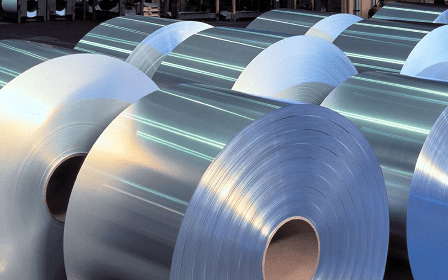The high resistance and relatively low cost of aluminium foils make them suitable for industrial applications. By alloying aluminium with other metals such as magnesium, manganese, copper, nickel, silicon or zinc, a wide range of aluminium alloys and foils with different properties can be produced.
Whether for packaging or for technical applications such as vapour barriers in housing construction or insulation in piping systems – aluminium foil offers countless possibilities and is indispensable in any branch of industry.
Aluminium foil for insulation and vapour barriers in the construction industry
One of the most important areas of application for aluminium foil is insulation. For example, it is used as insulation for the insulation of pipes and ducts.
In the construction industry, aluminium foil is also used as a top layer for insulation materials such as asbestos, foam insulation boards and laminate mats in the insulation of buildings. As a vapour barrier, the film ensures that no water vapour penetrates the insulation, thus preventing mould formation and moisture damage.
In addition to their vapour barrier properties, aluminium foils reflect approximately 96% of radiant heat and are therefore ideal for thermal insulation. They are also easily deformable or coated with protective paint, which increases their range of applications.
1) 96% of radiant heat is reflected by aluminium
Aluminium foil for insulation is available in both dense and perforated versions. Dense insulation is particularly suitable where a moisture barrier is required, for example in basement walls or sauna rooms.
Perforated aluminium foils have small holes which allow air to circulate and thus prevent condensation in the event of large temperature differences. This is particularly advantageous in the insulation of roofs. Aluminium foil with larger holes is called punched or perforated aluminum foil.
2) Perforated aluminium foil prevents condensation
Thanks to its easy handling, aluminium foil can be installed quickly even in large buildings such as warehouses.
The lamination of mineral wool with aluminium foil also reduces the formation of fibres from the mineral wool. As a result, aluminium foil also increases health protection and safety during the installation of insulation.
Aluminium foil for cable insulation
Due to its light weight and high electrical conductivity, aluminium foil is ideal for the insulation of power cables. This is particularly important for heavy-duty high-voltage cables. Not only does it improve electromagnetic compatibility, it can also be used to locate damage.
In addition, aluminium offers a degree of protection against electric shocks caused by damage to the cable. The barrier properties of aluminium foil also protect fibre optic cables from moisture and reduce interference from electronic equipment in communication cables.
Aluminium foil as the basis for aluminium tape
Aluminium foil tape is a thin aluminium foil with a heat-resistant adhesive coated on one side. Compared to tapes made from plastic, aluminium tape has the advantage of being highly heat resistant. It does not become brittle due to heat or cold and is therefore more durable than plastic tapes.
1) Aluminium tape is always used where it must withstand high or low temperatures.
Aluminium tape is particularly used in heating and ventilation systems. For example, pipe insulation is wrapped with thin wire to provide the necessary support. The wires are then held in place with aluminium tape. Joints and connections are also covered with aluminium tape to improve insulation.
Aluminium is also used in the construction industry, for example, to seal off joints in steam barriers or to prevent heat loss due to insulation leaks.
In electrical engineering, aluminium strips are used as shielding. For this purpose, housing components or openings are bonded with self-adhesive aluminium foil or aluminium tape.


